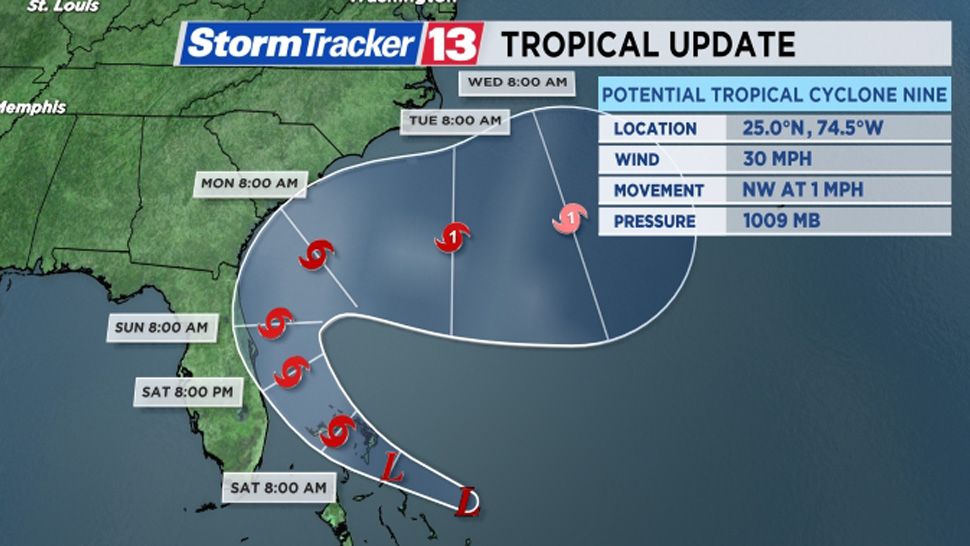ORLANDO, Fla. — Before Tropical Depression Nine developed and then grew into Tropical Storm Humberto, it was declared a potential tropical cyclone.
- STORM SEASON 2019: Interactive Storm Tracker | Latest News
- RELATED: Hurricane Humberto Strengthens; No Threat to US
- Read more of Spectrum News 13's Weather Blog
So you may have heard that phrase tossed around and wondered what does that exactly mean?
A potential tropical cyclone is a designation for a tropical disturbance that is or has the potential to further organize into a tropical storm or hurricane and could bring impacts to land within 48 hours.
This type of disturbance is not officially a storm and cannot be named until it gains the characteristics of a tropical storm or hurricane. It isn’t even a tropical depression.
A potential tropical cyclone is simply an area of disturbed weather that has a higher likelihood of developing further tropical characteristics and will likely bring impacts to land soon.
By declaring an area of disturbed weather a potential tropical cyclone, this allows tropical storm and/or hurricane advisories to be put into effect to give people an advance notice of an approaching storm.
Tropical storm and hurricane watches are issued 48 hours out. Warnings mean hurricane or tropical storm conditions are likely within 36 hours.
Potential tropical cyclones are then given forecasts tracks too and regular advisories are given every six hours just like tropical depressions, tropical storms, and hurricanes.
This practice of declaring areas of disturbed weather as potential tropical cyclones started during the 2017 Atlantic Hurricane Season.




